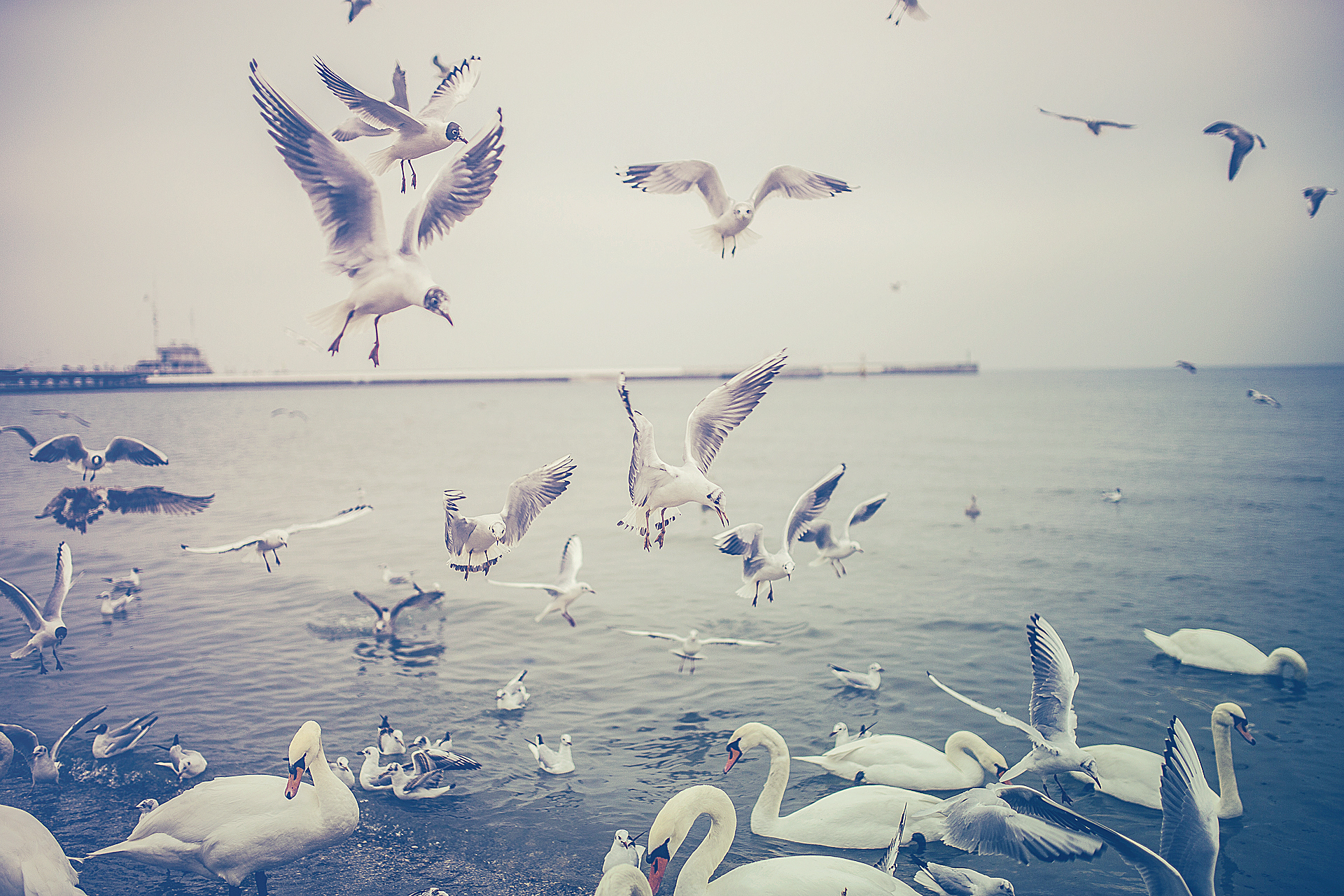Raiganj Bird Sanctuary
2nd largest in Asia
- Situated along the National Highway and by the side of the Kulik river is the Raiganj Bird Sanctuary with an area of 35 acre and buffer area of 286.23 acre. The forest, water bodies and the river attract the migratory birds like Open Bill Strok, Night heron, cormorant, little cormorant & Egrets from South Asian countries and coastal regions. Local birds like dove, bulbul, sparrow, king fisher, woodpeckers, owl, duck & cuckoo, can also be seen in large numbers.
- The migratory birds arrive from end of May to Ist week of July and depart from mid December to end of January. The nesting time is from July to August & egg laying from August to September. The flying training to the young ones is the best time to observe the birds, around October to November. Every winter nearly 150 different bird species arrive here from the north in numbers ranging from 65,000 to 75,000. Some of the common migratory birds seen here are Open-Billed Storks, Asian Open-billed storks, Egrets, Knight Herons, and Cormorants. Indian birds like kites, flycatchers, kingfishers, owls, woodpeckers, drongos, and bee eaters. The sanctuary has artificial network of man made canals which is connected to the River Kulik. During the months of monsoon the flood water from the river enters the plains of the sanctuary. This acts as the important source of food for most of the bird species.
- Legal status of the Forest :-
Reserved Forest 573.71 Acre
Protected Forest 249.50 Acre
Unclassed Forest 660.54 Acre
Total 1483.75 Acre = 610.71 Ha = 6.01 Sq. Km
Raiganj Church
2nd largest in India

The magnificent and beautiful cathedral dedicated to St. Joseph the Worker, the patron saint of Raiganj Diocese stands as the testimony of the faith and support of the people of the diocese, the pastoral leadership provided by Bishop Alphonsus D'Souza S.J. and the meticulous planning and implementation by Fr. Sunny M.V., the treasurer of the diocese and secretary of the Bishop. The spacious cathedral towering towards the blue skies is a gem of architecture with exquisite glass and ceiling paintings, prominent pillars on both sides modeled on Greek pillars, beautifully carved doors and magnificent high altar with an hexagonal dome on top of it with eye-catching paintings.
This cathedral that took three years and ten months to complete was inaugurated and dedicated by Bishop Alphonsus D'Souza S.J. on 17 November 2010. The background to the construction of this magnificent cathedral has an interesting history. As every great thing has a humble beginning, it was way back in 1962, Fr. Albinus Kujur began a mission center at Chotaparua in a small tin house which had a chapel, living room and a refectory. When the Diocese of Raiganj was erected in 1978 the first Bishop Leo Tigga S.J. stayed in the same house till the present Bishop's House was constructed. Realizing the need to have a larger parish church, it was Fr. Verghese Kozhikadan who began the construction of the parish church in 1972 which was completed in 1974. This tin roofed church subsequently became the cathedral of the Raiganj Diocese when the diocese was created in 1978. The same church continued to serve as the cathedral of the diocese when Dr. Alphonsus D'Souza S.J. was appointed as the Bishop of Raiganj.
As the old tin roofed cathedral had been leaking during the rainy seasons and the space being inadequate to hold the increasing catholic population, there had been a proposal since 2002 to have a new building for the cathedral. However, being concerned with the spiritual and material wellbeing of the people, Bishop Alphonsus was not keen on spending huge amount of money that was required for the construction of a new cathedral.
t was in 2004, while accompanying Bishop Alphonsus from the Malda railway station on his way back from a visit to his native village in Moodubelle, the treasurer of the diocese and secretary to the Bishop, Fr. Sunny M.V. once again put forward the suggestion for a new building for the cathedral. The Bishop thought for a while and said that the proposal can be considered.
Having given his consent to have a new cathedral, Bishop Alphonsus constituted a committee with Fr. Sunny as the convener and Vicar Generals-Fr. S. Santhappan and Fr. Patras Bara, Fr. Michael Raj and the then Pro-Vicar, Fr. Kishore Baxla as members to plan and execute the construction of the cathedral in 2005. It took nearly one year to get the necessary permission from the government authorities and another year to finalize the plan of the cathedral.Having assigned the task of preparing a plan for the cathedral, Fr. Sunny wanted to see some of the famous churches and cathedrals in different parts of India and went to various places such as Kerala, Chennai, Bangalore and Hyderabad. However, while observing various churches and cathedrals, Fr. Sunny had no intention of copying their architecture, but to get inspiration to produce a unique type of architecture without a parallel in the entire country. He accessed internet for various types of European architecture right from Gothic to Renaissance and from Roman to Greek and Baroque. Piecing together the examples that he had collected from his visits to various churches and cathedrals in India and from the internet, Fr. Sunny with the help of a local artist Gurupada Sarkar prepared a drawing and approached an architect in Kolkata, Arvinda Chatterjee who prepared the final structural plan.
With the plan of the proposed new cathedral in hand, the foundation stone for the construction was laid behind the existing dilapidated old cathedral on 9 January 2007. The construction work went on for three years and ten months under the guidance of Bishop Alphonsus and active supervision of Fr. Sunny. Following the completion of the construction of the cathedral it was inaugurated, blessed and dedicated on 17 November 2010 by Bishop Alphonsus D'Souza S.J. in the presence of eight other Bishops including the Archbishop of Patna and Bishops of Purnea, Baruipur, Asansol, Krishnagar, Bagdogra, Jalpaiguri and Darjeeling. The dedication ceremony was attended by many Major Superiors, 600 priests and religious and about 30,000 faithful from all over West Bengal and nearby dioceses of Dumka and Purnea.
The inauguration of the cathedral was a treat to the eyes with a grand procession in which the Santals presented their tribal dances and drumbeats. The statues of St. Joseph and Mother Mary were taken in procession to the cathedral. Following the inauguration and blessing of the cathedral, all people participating in the grand ceremony were provided lunch. There was also cultural programme that was appreciated by one and all. The cathedral is a gem of an architecture presenting unique architectural and artistic features that sets it apart from other cathedrals not only in West Bengal, but probably the whole of north India. The 12,500 square feet cathedral is 95 feet high in the front elevation has a capacity of 2000. It has beautifully designed granite and marble floors and walls, galleries, oil paintings, stained glass windows with scenes from Old and New Testament, exclusive wooden, cement and fiber works, huge decorated pillars, large carved wooden doors, an attractive high altar and large beautiful statues. Even the rear end of the cathedral has been exquisitely developed with a large 'Pieta' statue (Mother Mary holding the body of crucified Christ) and a beautiful semi-circular rose garden adding to the elegance of the entire edifice. A number of artists from different parts of West Bengal had worked in different capacities in making the cathedral one of the most attractive monument that has been visited by a large number of tourists and pilgrims since its inauguration in November 2010. According to Fr. Sunny, the pillars and ornamental work was done by the masons from Mayapur where the world famous ISKON center is located. The stain glasses depicting the scenes from the Old Testament in the lower windows and scenes from the New Testament in upper rows were executed by artists from Krishnagar in Nadia district of West Bengal.

Durgapur Rajbari

Bhaibobi Temple
Other notable places
- Sap nikla forest under Chopra block is 22 km from Islampur and tourists visit the lake and the forest for site seeing. Development of an Eco park is underway.
- Eco Tourism at Bijolia More is being developed. Here river Sudhani forms an island by dividing into 2 branches and joining again.
- Temple of Goddess Bhairabi at Bindole. Temple of Goddess Bhairabi at Bindole.
- Mosque of Burhana fakirs. Mosque of Burhana fakirs
- Temple of Goddess Kali of Baira.
- Kunore-famous for terracotta pottery & Malgaon.
- Museum at Karnajora.
- Park at Karnajora.
- Banabithi Resort at Barui, Barduari.
- Farm-House at Samaspur, Hemtabad

